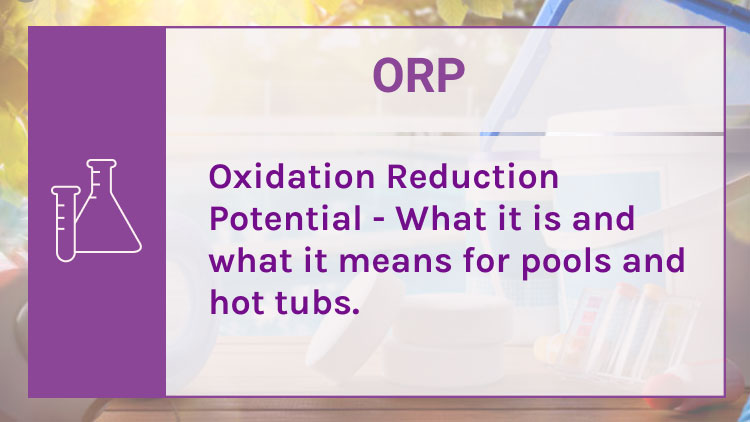ORP is a measurement of the water’s ability to oxidize or reduce (chemically alter) substances and is measured by using an oxidation reduction potential meter.
It is an inexpensive way to measure how effective a water’s sanitizer is but it doesn’t give the full picture and shouldn’t be taken alone at face value.
What’s the difference between ORP measurements and chlorine measurements?
The key difference is that ORP doesn’t measure the concentration of sanitizer in the water, it measures the potential of a chemical reaction.
There are other factors that impact a sanitizer’s effectiveness and those should also be considered to fully understand water health and understanding how to treat it.
This isn’t to say that ORP is useless or bad, just that it should be used in conjunction with other tests to fully understand water health.
What should you consider when using ORP to understand your water’s ability to sanitize?
ORP measurements are instantaneous and don’t consider chlorine ions that are bound to CYA.
This is important to understand because it can lead to a measurement that doesn’t account for the bound chlorine ions being released multiple times per second, which means they can be used to sanitize.
The bound ions are still available to oxidize, albeit less effectively than unbound ions.
CYA / chlorine bonds are stronger in the presence of UV rays and that causes a difference in the daytime vs nighttime ORP measurements. This can lead to adding sanitizer when it’s not needed or not adding when it is needed. Not good.
As the pH increases, the ORP value will decrease. Similar to the CYA explanation, this could lead to the addition of chlorine when it’s really not necessary.
Oxidation occurs more quickly in higher water temperatures and can skew measurements if the temperature of the water isn’t taken into consideration and factored into the equation.
As is common with all electronic sensors, ORP sensors will need to be calibrated from time to time.
Solution: liquid reagent measuring robot
All of that to say that the oxidation reduction potential measurement alone isn’t a magic bullet for determining overall water health and is one of the things that led Sutro pool monitor to the use of liquid reagent tests.
This allows Sutro to accurately measure multiple parameters and then use algorithms to give users tailored recommendations.
This is the reason that Sutro invented a liquid reagent measuring robot that provides a more complete picture of water health in an accurate and repeatable way.
